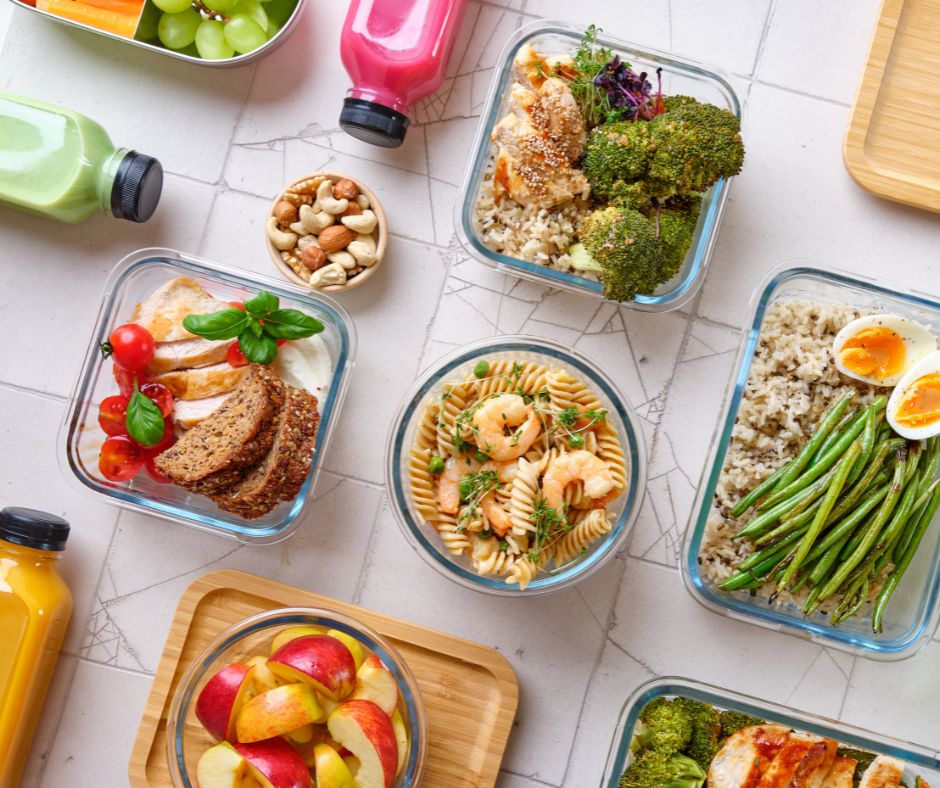Meal Prep for the Week—A Beginner’s Guide to Quick and Healthy Eating
Are you constantly juggling work, family, and personal time, only to find yourself scrambling to figure out what’s for dinner? Do you wish there was an easier way to manage your meals without the daily stress? You’re in the right place. This guide will teach you the art of efficient meal planning and meal prepping, specifically designed for busy women who want to stay healthy without spending hours in the kitchen.
Meal prepping is your secret weapon for maintaining a nutritious diet, saving time, and reducing the stress of daily cooking. By dedicating just a few hours each week to planning and preparing your meals in advance, you can take control of your nutrition, eliminate the evening scramble, and always have delicious, healthy meals ready to go.
In this step-by-step guide, we’ll walk you through how to plan and prep your meals efficiently, from choosing recipes and creating a grocery list to prepping and storing your meals. Plus, we’ll share insider tips and strategies to streamline the process so you can get the most out of your meal prep routine.

Benefits of Meal Planning and Meal Prepping
Meal planning and meal prepping aren’t just trendy buzzwords; they are powerful strategies that can transform your approach to food. Here’s why they are essential for busy women:
- Save Time: With a meal plan in place and meals prepped ahead, you can skip the daily decision-making and avoid spending unnecessary time in the kitchen. This frees up your schedule for more important things—like spending time with family or unwinding after a long day.
- Save Money: Planning your meals in advance allows you to buy ingredients in bulk, reduce food waste, and resist the temptation of pricey takeout. Over time, these savings add up, giving you more financial flexibility.
- Improve Your Health: When you plan and prep your meals, you’re more likely to choose healthier options and control portion sizes. This makes it easier to stick to your dietary goals, whether it’s weight management, boosting energy, or just eating more nutritious foods.
- Reduce Stress: Knowing what’s for dinner every night can significantly reduce the stress of daily cooking. Meal prepping gives you peace of mind, knowing that you’re organized and prepared for the week ahead.
How to Create an Efficient Meal Planning and Meal Prepping System
Creating a streamlined meal-planning and meal-prepping system is key to making this a sustainable habit. Here’s how to get started:
- Assess Your Needs: Look at your weekly schedule and identify busy days when quick, pre-prepared meals would be most beneficial. Consider dietary preferences or restrictions that need to be accommodated.
- Set a Regular Planning Day: Choose a consistent day each week (like Sunday) to plan your meals and prep. Having a set routine makes it easier to stick with meal planning.
- Select Simple, Versatile Recipes: Choose recipes that use common ingredients and can be repurposed throughout the week. For example, roast a chicken that can be used in salads, sandwiches, and as a main dish.
- Create a Detailed Grocery List: Once your recipes are chosen, list out all the ingredients you’ll need. Double-check your pantry to avoid buying duplicates, which helps minimize waste.
- Prep Efficiently: Use your planning day to chop veggies, cook grains, and portion out proteins. Store these in labelled containers so they’re easy to grab and assemble during the week.
Step-by-Step Guide to Meal Planning
Meal planning is the foundation of a successful meal prep routine. Here’s a step-by-step guide to get you started:
- Review Your Schedule: Identify days where quick meals are needed and plan accordingly.
- Choose Balanced Recipes: Select meals that offer a good mix of proteins, vegetables, and whole grains. Ensure they align with any dietary goals or restrictions.
- Create a Meal Schedule: Plan out what you’ll eat each day, making sure to include leftovers for the busiest nights.
- Make a Grocery List: Write down all the ingredients you need and check your pantry to avoid overbuying.
Step-by-Step Guide to Meal Prepping
Once your meal plan is set, it’s time to prep:
- Gather Your Tools: Make sure you have all the containers, knives, and other tools you need to prep efficiently.
- Prep Ingredients: Wash, chop, and portion out ingredients for easy assembly during the week. Cook any proteins or grains that can be stored for later use.
- Assemble Meals: Put together complete meals or keep ingredients separate for mix-and-match options. Store in airtight containers and label them for easy access.
- Store Properly: Keep your prepped meals fresh by refrigerating or freezing them according to food safety guidelines.
Tips for Efficient Meal Planning and Prepping
Here are some additional tips to make your meal planning and prepping more efficient:
- Consistency is Key: Stick to a regular planning and prepping schedule.
- Batch Cook: Prepare large quantities of staples like grains and proteins to use in multiple dishes.
- Organize Your Kitchen: Keep your pantry, fridge, and freezer organized so you can quickly find what you need.
Meal Planning and Prepping on a Budget
Meal planning and prepping can also be a great way to save money. Focus on budget-friendly ingredients like beans, lentils, and seasonal vegetables. Buy in bulk, cook in batches, and use leftovers creatively to stretch your grocery budget.
Bottom Line
Mastering meal planning and prepping is a game-changer for busy women looking to maintain a healthy lifestyle. With just a little organization and effort, you can save time, reduce stress, and enjoy nutritious meals all week long. Start small, find a system that works for you, and watch how this simple habit can transform your life.
I am currently taking on new clients, if you want to find out how I can help you: Email hello@nutri-sian.co.uk or book a FREE call to discuss more here.
You might also like …
5 Reasons Why Stress Sabotages Your Weight Loss Efforts
How stress impacts your weight and what you can do to help. Feeling constantly tired, craving sugar, and noticing stubborn belly…
Unlock More Energy With Better Gut Health
Why Your Gut Might Be the Missing Link in How You Feel You’re juggling a million things—work deadlines, family logistics, hormonal ups…
The Best Brain-Boosting Foods for Focus and Clarity
The Best Brain-Boosting Foods for Focus and Clarity Do you ever find yourself struggling to focus during a busy day, forgetting…
7 Quick and Powerful Mood Boosters for Busy, Stressful Workdays
Quick Ways to Boost Your Mood Naturally During a Busy Day When was the last time you felt truly energised during…
What to eat when you have no time to cook
What to Eat When You Have No Time, Energy & Motivation Feeling shattered and unmotivated? After a busy, long day you…
How to Stop Emotional Eating
How to Stop Emotional Eating: 7 Practical Tips to Break the Cycle Balancing a demanding career, managing family responsibilities, and trying…






